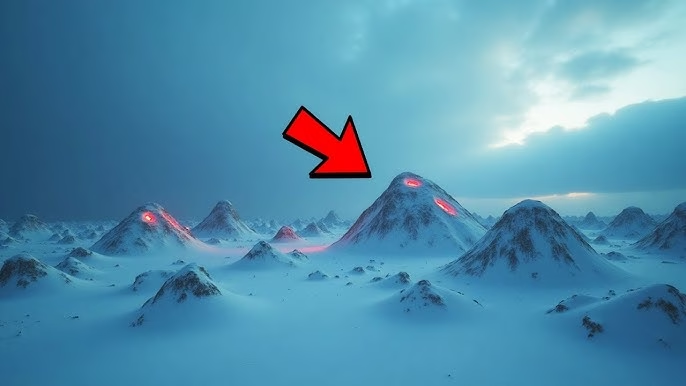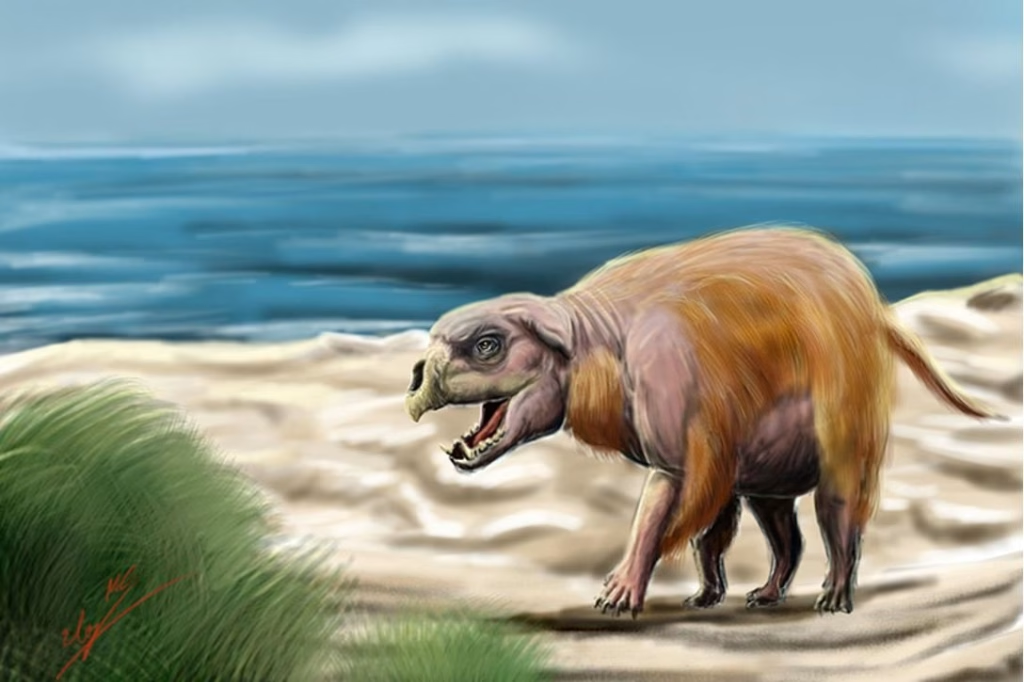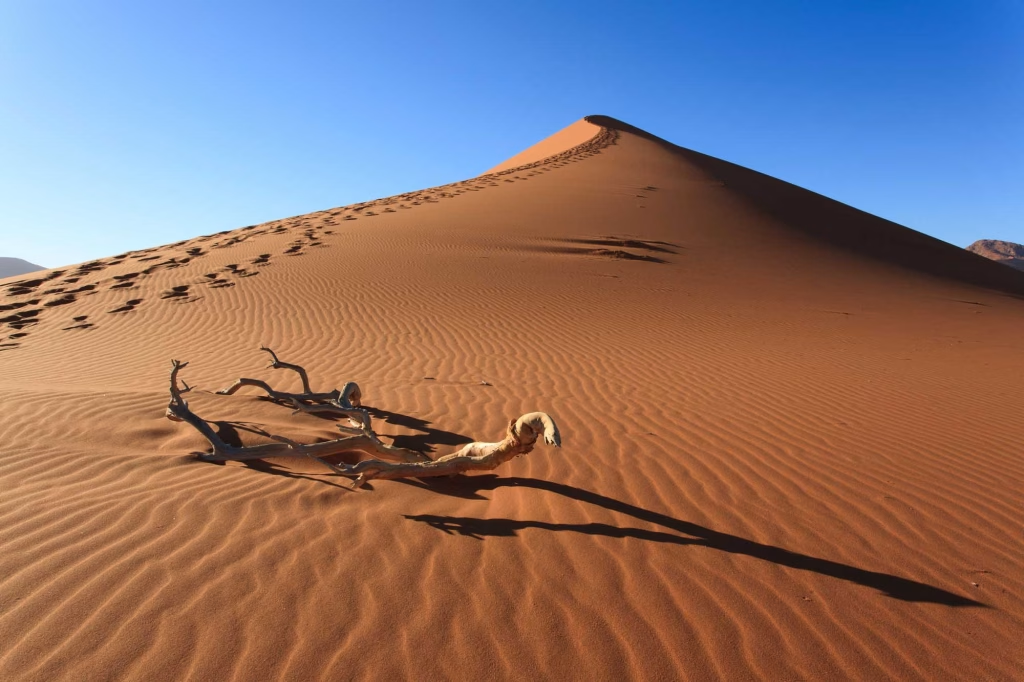In the summer of 2014, a lone helicopter pilot flying over the remote tundra of Siberia’s Yamal Peninsula spotted something that seemed impossible. Beneath him, in an otherwise flat, empty expanse of mossy ground, was a perfect circle gouged into the Earth — a colossal hole over 100 feet deep and 60 feet wide, with its rim lined by ejected soil and rock as though something had erupted violently from below.
At first glance, it looked like a meteorite impact site. Others speculated it might be the result of a secret weapons test — or even alien activity. But scientists would soon confirm that this mysterious formation was neither a sinkhole nor a man-made crater. It was something far stranger — and far more frightening.
This was just the beginning. Over the next several years, nearly 20 similar craters would be discovered across northern Siberia. And they weren’t just geological curiosities — they were the first visible signs of a new, dangerous, and global phenomenon.
A Journey Into the Frozen North
To understand this mystery, we must travel to one of the harshest environments on Earth — the Yamal and Gydan Peninsulas of northwestern Siberia.
This is a land of endless tundra — treeless, windswept plains stretching for hundreds of miles under the Arctic sky. For centuries, this has been home to the Nenets, a nomadic people who herd reindeer and navigate this unforgiving wilderness with a deep respect for the forces of nature.
Beneath their feet lies the foundation of the Arctic ecosystem: permafrost — a layer of soil and rock that has remained frozen for tens of thousands of years. The permafrost is not just frozen mud. It is a time capsule, locking away the remains of plants and animals from the Ice Age. And within it lies a massive secret — a reservoir of carbon so vast that scientists call it the “Sleeping Giant.”
The Sleeping Giant Awakens
Scientists estimate that the world’s permafrost holds 1.7 trillion tons of carbon, more than double the amount currently in the atmosphere. Much of this is in the form of methane, a greenhouse gas more than 80 times more potent than carbon dioxide at trapping heat over short timescales.
For thousands of years, this carbon stayed safely locked away. But today, the Arctic is warming nearly four times faster than the rest of the planet. As temperatures rise, the permafrost begins to thaw, waking up microbes that have been dormant since the last Ice Age.
These microbes feast on the thawed organic matter, releasing methane and carbon dioxide into the atmosphere. This, in turn, leads to more warming — which thaws even more permafrost. This vicious cycle, known as a positive feedback loop, has the potential to dramatically accelerate climate change.
But sometimes, the methane doesn’t just seep out quietly. Sometimes, it explodes.
The Day the Ground Blew Open
When the first Yamal crater was investigated by Russian scientists, they were astonished at what they found. The air near the bottom of the chasm was saturated with methane. The walls of the crater bore the marks of a violent upward explosion — as if the ground itself had erupted like a champagne bottle under pressure.
Over the next few years, more of these craters were discovered. Some were fresh, with smoking rims. Others had already begun filling with water, turning into perfectly round lakes.
Then, in 2017, scientists made a discovery that was even more unsettling. While surveying the tundra, they came across a patch of ground that was bulging upward like a blister on the Earth’s surface.
Realizing what they were standing on, the researchers backed away quickly: beneath their feet was a pocket of methane so pressurized it was literally lifting the ground. They had found a crater-in-the-making — a live gas bomb that could go off at any moment.
Bulgyak: The Earth’s Blisters
The indigenous Nenets people have long known about these strange bulges and call them Bulgyak, or “swollen land.” What the scientists discovered was that these bulges represent the final stage in a dramatic multi-step process:
- Thawing permafrost releases methane from deep within the soil.
- The methane rises until it reaches a still-frozen, impermeable layer of ground just below the surface.
- The gas accumulates in a pocket, pushing the ground upward until the pressure becomes too great.
- Finally, the ground explodes — hurling earth and ice hundreds of feet into the air and leaving behind a giant, gaping crater.
This is a natural process — but one that is happening with increasing frequency as the Arctic warms.
A Vast Natural Minefield
Using satellite imagery, scientists have now identified around 7,000 of these bulging mounds across Siberia’s Arctic regions. Each one represents a potential future explosion.
This is more than a local hazard. These gas blasts pose a risk to oil and gas infrastructure in the region, threaten indigenous communities, and release huge surges of methane directly into the atmosphere.
In effect, the Arctic tundra is turning into a natural minefield — one that could reshape the climate of the entire planet.
A Warning from the Cryosphere
These craters are not just geological oddities. They are a message from the Arctic — a distress signal from the cryosphere, the frozen regions of our planet.
They remind us that climate change is not just a slow, distant process. It can be sudden, violent, and irreversible. Each explosion is a flare, warning us that the sleeping giant of permafrost carbon is stirring, and if it fully wakes, it could tip our climate into a new and dangerous state.
The Work Continues
Today, Russian scientists are racing against time. They are using drones, satellites, and field expeditions to monitor these bulging mounds, trying to predict which ones are most likely to explode next. It is dangerous work — and urgent work.
Because the truth is this: what happens in Siberia will not stay in Siberia. The methane released by these explosions does not remain trapped over the tundra. It spreads across the globe, adding fuel to the warming that affects us all.
Final Thoughts
The exploding craters of Siberia are one of the most dramatic and unsettling signs of the changes taking place on our planet. They are a testament to the immense power hidden within the Earth — and to the consequences of disrupting its delicate balance.
Standing on the rim of one of these craters, looking down into the dark abyss, one can’t help but feel a sense of awe and dread. These are not just holes in the ground. They are windows into the future — a future that is arriving faster, louder, and more violently than we could have ever imagined.
The question we must now ask is simple: Are we listening?



